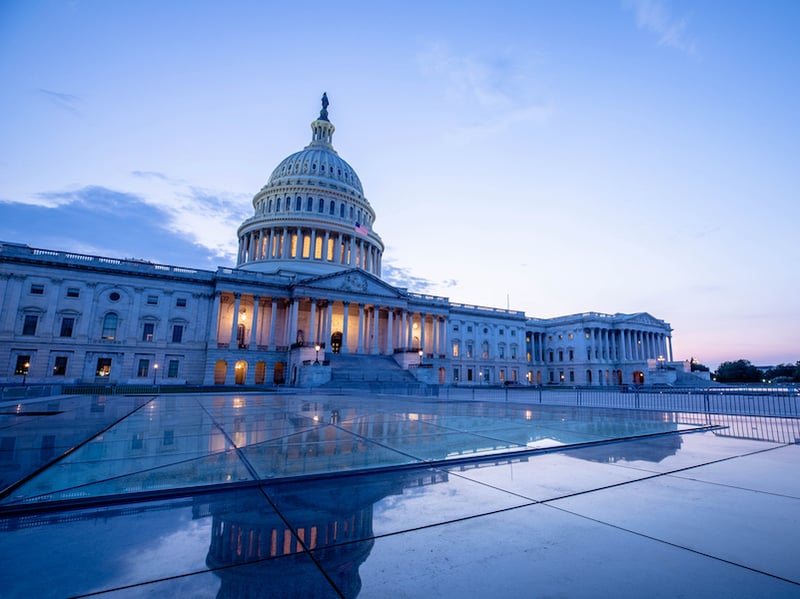SECURE 2.0 changes for employer-sponsored retirement plans
February 15, 2023

Staying on top of changing regulations for employer-sponsored retirement plans is a perennial challenge. As an example, President Biden enacted the “Consolidated Appropriations Act, 2023” in the waning hours of 2022. In it are some significant updates and new rules that will impact many organizations.1
Included in this act is SECURE 2.0 which will have implications for plan sponsors and financial professionals now and into the future.
Key changes effective in 2023
Not all changes are effective immediately, but there are important provisions to keep in mind that went into effect January 1, 2023, or immediately upon SECURE 2.0’s signing.
Required minimum distribution age increases
The initial RMD age will increase incrementally to age 75 over 10 years. The first increase is to age 73 in 2023. Therefore, those who turn 72 in 2023 get another year to defer starting their RMDs.2
New employer matching options
Employers are permitted to allow participants the option of receiving matching contributions on a Roth basis. Since this is a taxable issue, the participant can elect or not elect to have their contributions made on a Roth basis.2
Small incentives to contribute to a retirement plan
Previously, items like gift cards in small amounts were prohibited as an incentive to join an employer’s retirement plan. Employers are now allowed to offer small “de minimis” financial incentives including low-dollar gift cards to boost employee participation in workplace retirement plans. These types of incentives cannot be paid for with plan assets, however.2
403(b) plans can participate in MEPs and PEPs
The SECURE 2.0 Act now allows 403(b) plans to participate in multiple employer plans (MEPs) and Pooled Employer Plans (PEPs), effective for plan years beginning in 2023. Including relief from the one bad apple rule, meaning violations from one employer won’t affect the tax treatment of employees of compliant employers.2
Exceptions for the terminally ill
Those who are terminally ill will not be required to pay the additional 10% tax for distributions.2
Changes in effect after 2023
The following changes will be implemented in the coming years, but it’s still important to keep them in mind as you plan for the future.
Required automatic enrollments
Employers who offer 401(k) or 403(b) plans will be required to automatically enroll participants once they become eligible, leaving the onus on employees on whether to opt-out. The initial automatic enrollment is a minimum of 3% but cannot exceed 10%. The amount increases by 1% each year afterward until it reaches at least 10%, but not more than 15%. Current 401(k) and 403(b) plans are grandfathered in. There are exceptions for small businesses with 10 or fewer employees, new businesses less than three years old, church plans, and governmental plans. This new ruling is effective for plan years beginning in 2025.2
New age tier for catch-up limits
Beginning in 2025, catch-up contributions for those ages 60–63 increase to $10,000 or 50% more than the regular catch-up amount, whichever is greater.2
After-tax catch-up contribution requirements
If the plan permits Roth, employees earning more than $145,000 are required to make all catch-up contributions to their qualified retirement plans on a Roth basis beginning January 1, 2024.2
Expanded eligibility for part-time employees
Employers must now allow eligible long-term, part-time employees to participate in 401(k) or 403(b) plans. Qualified part-time employees must complete either one year of service (with the 1,000-hour rule) or 2 consecutive years of service (where the employee completes at least 500 hours of service). This rule is effective for plan years beginning in 2025.2
RMD elimination
Beginning in 2024, Roth accounts in employer retirement plans will no longer be subject to RMD requirements.2
Student loan debt
Starting in 2024, employers will be able to "match" qualified employee student loan payments with matching payments to a retirement account.2
There are many other provisions, of course, but these are a good place to start. Please contact our team if you would like to talk through other implications as this legislation gets implemented.
Sources
1 Whitehouse.gov, Bill Signed: H.R. 2617, December 29, 2022
2 Federal.Senate.gov, SECURE 2.0 Act of 2022, 2022
CMRS-5445152.1-0223-0325